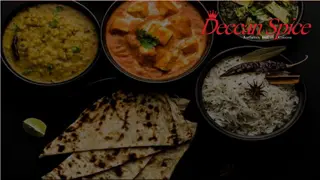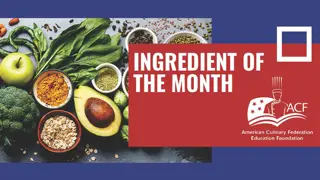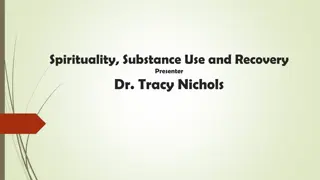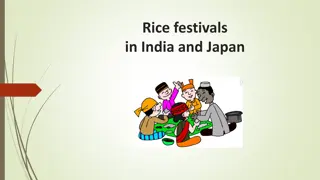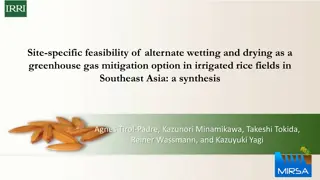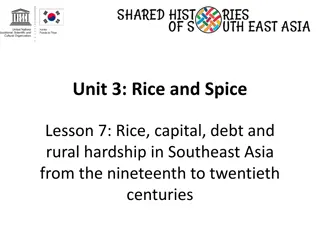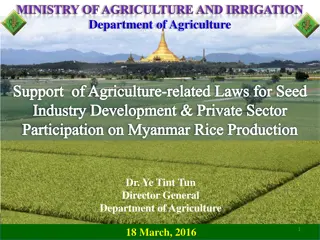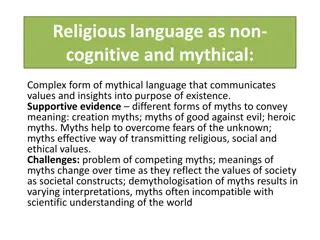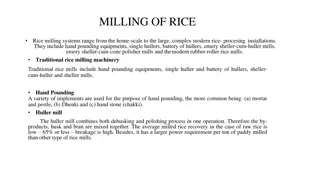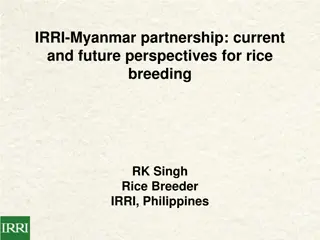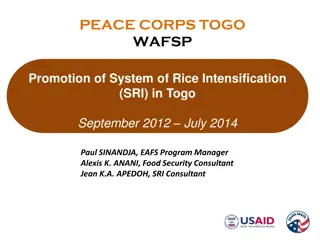Rice and Spice: Exploring Spirituality, Myths, and Legends
Delve into the cultural significance of rice in Southeast Asia, where it serves as a staple food, symbol of wealth, and central element in various rites and rituals. Explore historical accounts of rice ceremonies and the spiritual beliefs tied to rice cultivation. Engage in discussions on the symbolic importance of rice in different Asian cultures and the roles it plays in myths and legends.
Download Presentation

Please find below an Image/Link to download the presentation.
The content on the website is provided AS IS for your information and personal use only. It may not be sold, licensed, or shared on other websites without obtaining consent from the author.If you encounter any issues during the download, it is possible that the publisher has removed the file from their server.
You are allowed to download the files provided on this website for personal or commercial use, subject to the condition that they are used lawfully. All files are the property of their respective owners.
The content on the website is provided AS IS for your information and personal use only. It may not be sold, licensed, or shared on other websites without obtaining consent from the author.
E N D
Presentation Transcript
Unit 3: Rice and Spice Lesson 4: Rice and Spice: Spirituality, Myths and Legends
A note to users of this presentation This presentation was developed as complementary materials for teachers running this lesson. It follows the lesson plan. It includes content from the lesson plans and the introductory essays for teachers lectures. It also introduces some of the activities suggested for students. You are welcome to customize this presentation to adjust the lesson to their curriculum and to your students. You can change images, add/remove activities, and of course delete this slide, etc. The Teacher s Guide (https://sharedhistories.asia/teacher/) provides guidance on how to adjust the lessons. We wish you a successful lesson! The Southeast Asian Shared Histories project was developed by UNESCO Bangkok with funding from the Republic of Korea.
Rice Rice is central to Southeast Asia life: - staple food - indicator of wealth and social statues, etc.), Huge cultural and religious significance. Special rites and rituals are performed at different stages of rice production Source: jo.schz https://www.flickr.com/photos/joschz/4326405986/
A historians account about a rice ceremony he witnessed in Johol, a small town in Negeri Sembilan, Malaysia, in 1915 At planting, there are also ceremonies. Sometimes there is a special service known as bapua, consisting of a sort of mock combat, in which the evil spirits are believed to be expelled from the rice-fields by the villages. I saw this combat take place at Johol. Two parties assembled one on each side of a gully and hurled rods from the puar (the cardamom plant) across at one another till a blow in the face gave one of the combatants a bloody mouth and spoilt the fun. It lasted about half an hour. The rods or darts were about feet long, thin green and straight, and the pared root gave them a flat end like that of a stethoscope: it was this flat end which was thrown foremost. It has been suggested to me that they are stems of a ginger-plant. A pawang (a Malay medicine man or shaman) opened the proceedings with an invocation. The purpose was to expel all evil influences from the fields before planting. I was informed that singketa is a more serious combat with heavier weapons batang pisang (banana stem), if I remember rightly.
Think Pair Share Why are these rites and rituals performed? What do the people hope to achieve by performing them?
Group work Group 2: Sources 4, 5, 6 Group 3: Sources 7, 8 Group 1: Sources 2, 3 Rungus myth about Bambarazon (spirits associated with rice cultivation). Rice cultivation rituals in the East Visayan islands in the Philippines). Masks dance in Kalimantan Timur. Group 5: Sources 10, 11 Group 6: Sources 12, 13 Symbolic significance of rice in Thai Buddhism). Roles of glutinous rice play in the rights of passage of the Tai people in Vietnam). Group 4: Source 9 Toraja people
Group work 1. Which groups of people are you reading about from the sources and where are they located? 2. What is the cultural and religious significance of rice for this group of people? Use the following questions to guide your response. (a) What rites and rituals do they practise? (b) When do they practise the rites and rituals? (c) Why do they practise the rites and rituals? (d) What are the props used? (e) Who are involved? (f) Do you see evidence of the rites and rituals cementing kin and community relations? (g) Are there particular values that the rites and rituals seek to transmit? Describe the values.
Conclusion Elderly members in our communities often have important and relevant knowledge to share. Their stories, accounts and points of view are also important in helping historians understand history.






